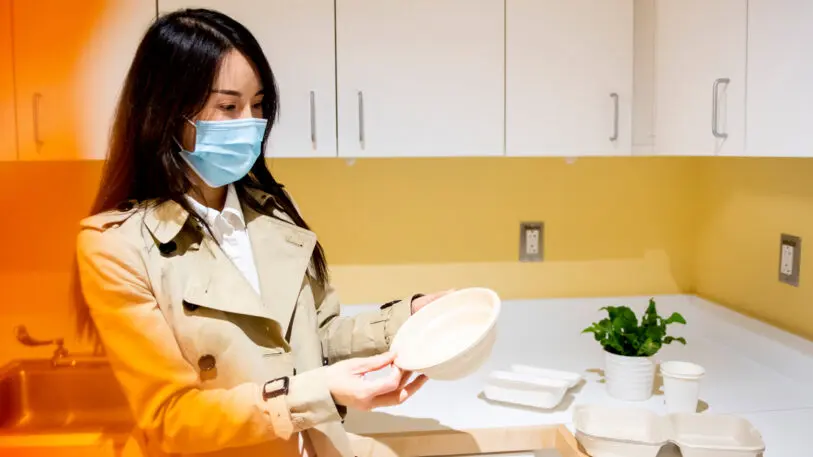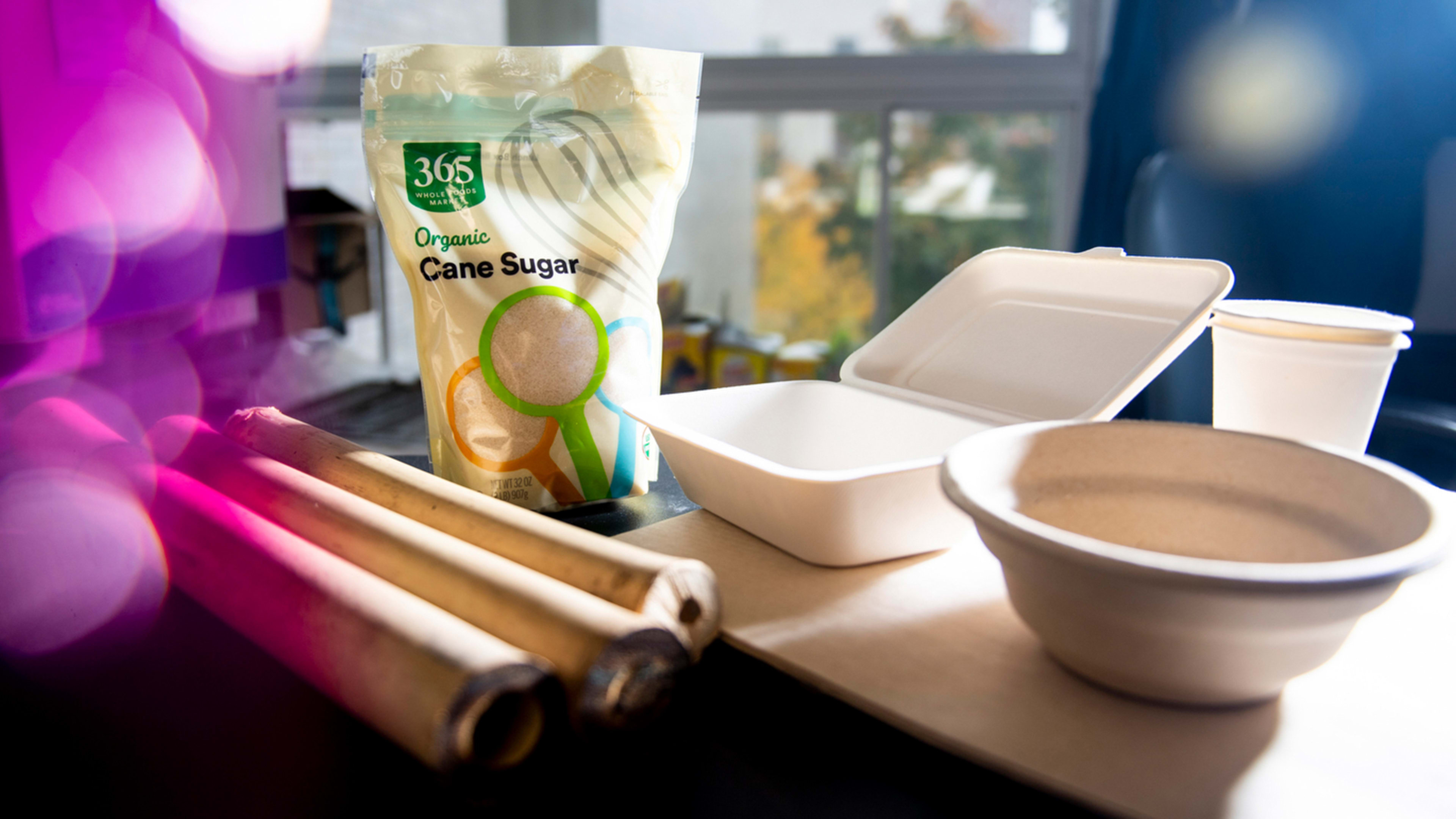Single-use tableware like cups, plates, and to-go containers are a huge source of waste. Even if they’re deemed compostable, they might still end up in a landfill, where they won’t break down without the specific conditions found in composting facilities. And eco-friendly food containers are often more expensive than plastic, and that upfront cost can be a barrier to adoption for both consumers and restaurants. Now, scientists say they’ve found a solution: tableware that can break down naturally in 60 days and is more affordable than compostable plastic, because it’s made out of sugarcane waste and bamboo.
When Hongli Zhu, an assistant professor at Northeastern University and co-author of a paper that lays out the new material in the journal Matter, first came to the U.S. in 2007, she says she was surprised at the amount of single-use containers in stores, at restaurants, and in the trash cans at her seminars. “If you [look] at the whole population, I can’t imagine how much plastic waste this kind of onetime use food container waste we generate on Earth,” she says. “People try to use materials created by humans, but I think we should look to nature. Nature has so much to offer.”
Her team at Northeastern decided to start with sugarcane bagasse, or the pulp byproduct of sugarcane extraction. In 2021, Brazil alone is expected to produce 39.5 million tons of sugar from its sugarcane harvest, and for every 10 tons of sugarcane crushed during extraction, there’s about three tons of pulp produced. This makes it cheap and eco-friendly, since it’s already waste, Zhu says. “The problem is sugar fiber is short, so from a mechanical stance, waste from sugar cane is not so strong,” she says. “We made a hybrid, mixing the shorter fibers with long bamboo fiber . . . [to] enhance the mechanical strength.” The pulp from the two fibers are then molded into plates, bowls, and containers.

And, unlike plastic which needs to be recycled (and often isn’t; in New York City, 5% of plastic dishware makes it into the recycling system) or PLA, which requires industrial composting and temperatures over 140 degrees Fahrenheit, the bamboo and sugarcane items can be buried right in the ground. When the Northeastern team buried this tableware in soil, it began to deform after 30 days and completely lost its shape and gradually disappeared at 60 days. “The chemical component in the end is cellulose—it’s the same chemical compound of grass, of a tree in your yard,” Zhu says.
The result, the researchers say, is clean, sustainable, strong packaging with a manufacturing process that emits 97% less CO2 emissions than polystyrene plastic production, and 67% less than paper products and PLA, a common biodegradable plastic. The cost is cheaper than biodegradable plastic too, at $2,333 a ton compared to $4,750 a ton for PLA production, and close to polystyrene, which comes in at $2,177 a ton. “When we think of plastic alternatives, we should think about cost. In the end we want it so a customer can buy it . . . the cost needs to be competitive with plastic,” she says. “I think nature has the answer already.”
Recognize your brand’s excellence by applying to this year’s Brands That Matter Awards before the early-rate deadline, May 3.
